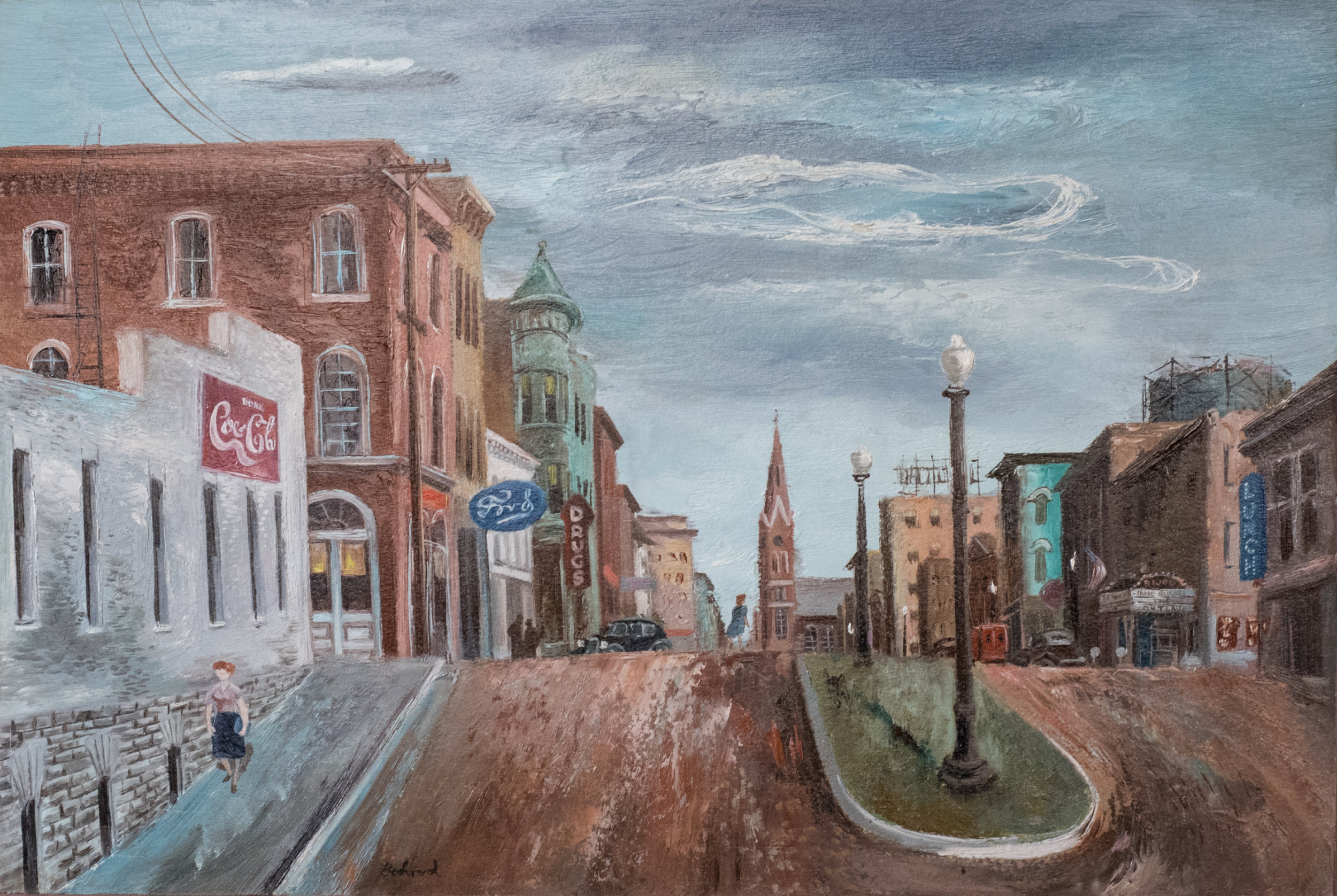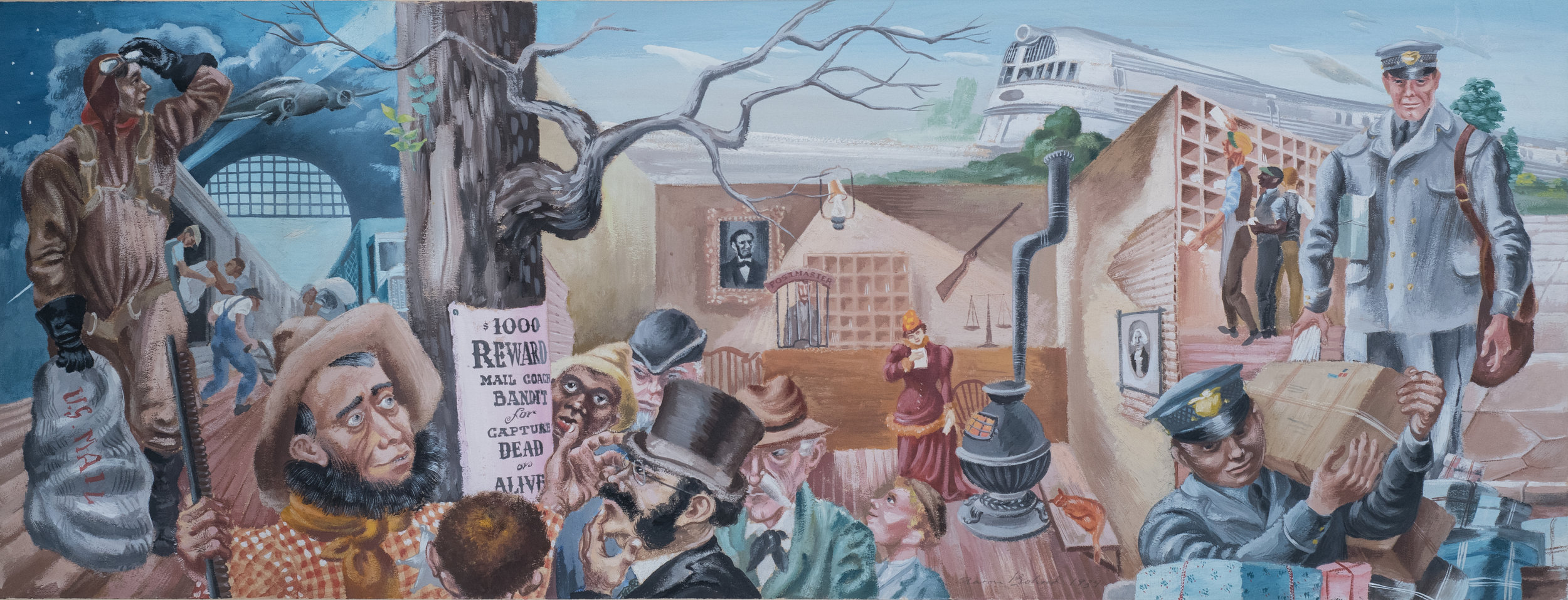Aaron Bohrod
Aaron Bohrod (1907-1992) was a painter, printmaker, and ceramist born on Chicago’s West Side, the son of Jewish immigrants. His early years held little in the way of formal artistic training outside of standard public school classes, and instead involved various types of self-education: first copying comics from the newspaper, then, later on, anatomical illustrations from his brother’s medical school textbooks. Bohrod entered the School of the Art Institute of Chicago in 1927 with his aims set on becoming a commercial artist. Two years later he left Chicago for New York to pursue fine art at the Art Students League instead. In New York, Bohrod studied lithography and painting under instructors like John Sloan, a prominent member of the Ashcan school.
Bohrod returned to Chicago after two years at the League, turning his eye to urban street scenes, and finessing his tight, detailed painting technique. In 1936 Bohrod was awarded a Guggenheim Fellowship that allowed him to travel and record regionalist scenes across the country. During World War II Bohrod became an artist for the United States Army Corps of Engineers’ War Art Unit, and subsequently a war correspondent for Life magazine. When he returned to the United States, Bohrod’s art took a surreal turn — his paintings became even more hyper-realistic, mostly still lives done in the trompe l'oeil style, and he began making ceramics in collaboration with F. Carlton Ball. In 1948 Bohrod accepted a position as the artist in residence at the University of Wisconsin-Madison, where he remained until 1973.


